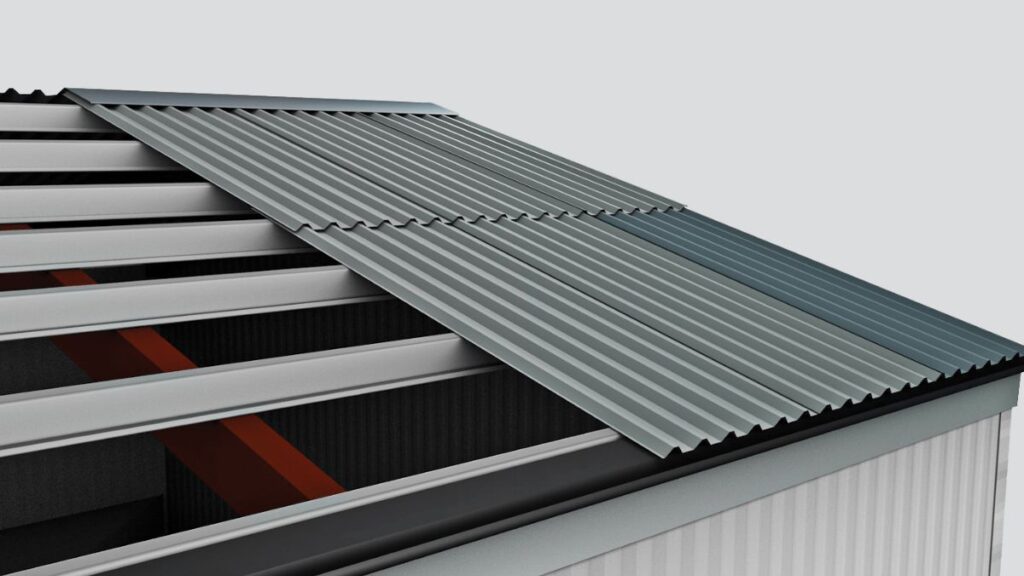Roofing and wall cladding are critical components of any construction project, offering protection, improved aesthetics, and energy efficiency. Proper installation is essential to ensure longevity and performance. Whether you’re renovating or starting a new build, this guide will give you practical tips to help you tackle the installation process like a pro.
1. Choose the Right Material for Your Project
Selecting the right material is the foundation of a successful roofing or wall cladding installation. Consider factors such as durability, climate, aesthetics, and budget.
- Roofing Materials: Options include metal roofs, asphalt shingles, clay tiles, and corrugated steel. Metal roofs, especially those made from corrugated steel, offer unmatched durability and weather resistance, making them ideal for long-term projects in challenging climates.
- Cladding Materials: Popular choices include metal, vinyl, wood, and composite materials. Each has its pros and cons, so choose one that aligns with your building’s functional and visual needs.
By selecting materials that suit your unique project requirements, you’ll reduce maintenance needs and achieve a cohesive appearance.
2. Prepare the Surface Properly
Proper preparation of surfaces ensures your installation will be smooth and lasting. Take the time to inspect and clean the base before starting the installation process.
- Remove debris, old shingles, or leftover materials to create a clean working area.
- Check for any structural damage or uneven surfaces and make necessary repairs. Uneven structures can compromise the integrity of the cladding or roofing, leading to leaks or instability.
- For wall cladding, ensure that the walls are properly waterproofed or insulated as required by the materials being used.
Investing time in preparation will help prevent costly problems post-installation.
3. Plan for Adequate Ventilation and Insulation
Ventilation and insulation are often overlooked but play a crucial role in the performance of roofing and cladding systems.
- Roofing: Proper ventilation prevents moisture buildup, which can cause mold growth and damage to the structure. Roof ridge vents and soffit vents are excellent options for maintaining airflow.
- Wall Cladding: Ensure that there’s adequate air space between the cladding and the building’s wall surface. This allows trapped moisture to escape and prevents condensation that can lead to structural damage.
Good ventilation and insulation will not only protect your property but also lower energy costs.
4. Follow Manufacturer Guidelines for Installation
Every material and system you use will come with manufacturer guidelines. These are written specifically to ensure that the product performs as expected.
- Always follow the recommended installation procedures, including fastener spacing, overlaps, and sealing techniques.
- Use manufacturer-approved tools and accessories such as corrosion-resistant screws for metal cladding or roofing.
- Avoid cutting corners, as improper installation can void warranties.
Carefully adhering to the guidelines ensures that you get the best performance and longevity out of the materials.
5. Secure Proper Weatherproofing
Regardless of how well materials are installed, weatherproofing ensures that both roofing and cladding resist moisture infiltration and extreme weather conditions.
- Roofing:
- Install an underlayment that creates a barrier between the roofing material and decking.
- Use flashing around roof valleys, chimneys, and vents to prevent leaks.
- Wall Cladding:
- Apply weather-resistant barriers such as house wrap before installing the cladding.
- Seal all edges, joints, and gaps thoroughly using high-quality caulking or sealers to prevent water penetration.
Weatherproofing adds an extra layer of protection and durability, especially in areas prone to heavy rain or snow.
6. Maintain Safety During Installation
Safety should always be a top priority during roofing or cladding installation. Working at heights and with heavy materials comes with inherent risks.
- Use proper safety gear, including harnesses, gloves, and hard hats.
- Ensure scaffolding or ladders are stable and properly secured.
- For large or complex projects, consider hiring professionals who specialize in roofing or wall cladding installations.
Safety-first practices reduce the risk of accidents or injuries on-site.
7. Conduct a Final Inspection
Once you’ve installed the roofing or cladding, a thorough inspection ensures everything is in place and functioning as it should.
- Check for alignment issues, loose fasteners, or visible gaps.
- Test for waterproofing by spraying water over the roof or walls and inspecting the interior for leaks.
- Confirm ventilation systems are operational and free of blockages.
A final inspection is your chance to catch and fix minor issues before they turn into costly repairs.
8. Plan for Ongoing Maintenance
The installation process doesn’t end once materials are in place. Routine maintenance is essential for extending the life of your roofing and cladding systems.
- Clean gutters and drains to prevent water buildup that can damage roofing materials.
- Regularly inspect seals, flashing, and fasteners for signs of wear or rust.
- Periodically clean cladding surfaces to maintain aesthetic appeal and prevent dirt build-up.
A clear maintenance schedule keeps your property in excellent condition for years.
Roofing and wall cladding installations require careful planning, attention to detail, and adherence to best practices. By following these tips, you’ll not only achieve a secure and aesthetically appealing result but also ensure your investment lasts for the long haul. For more insights into construction and innovative materials like corrugated steel, check out other resources.






